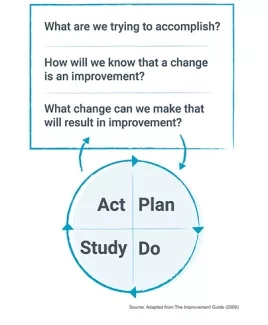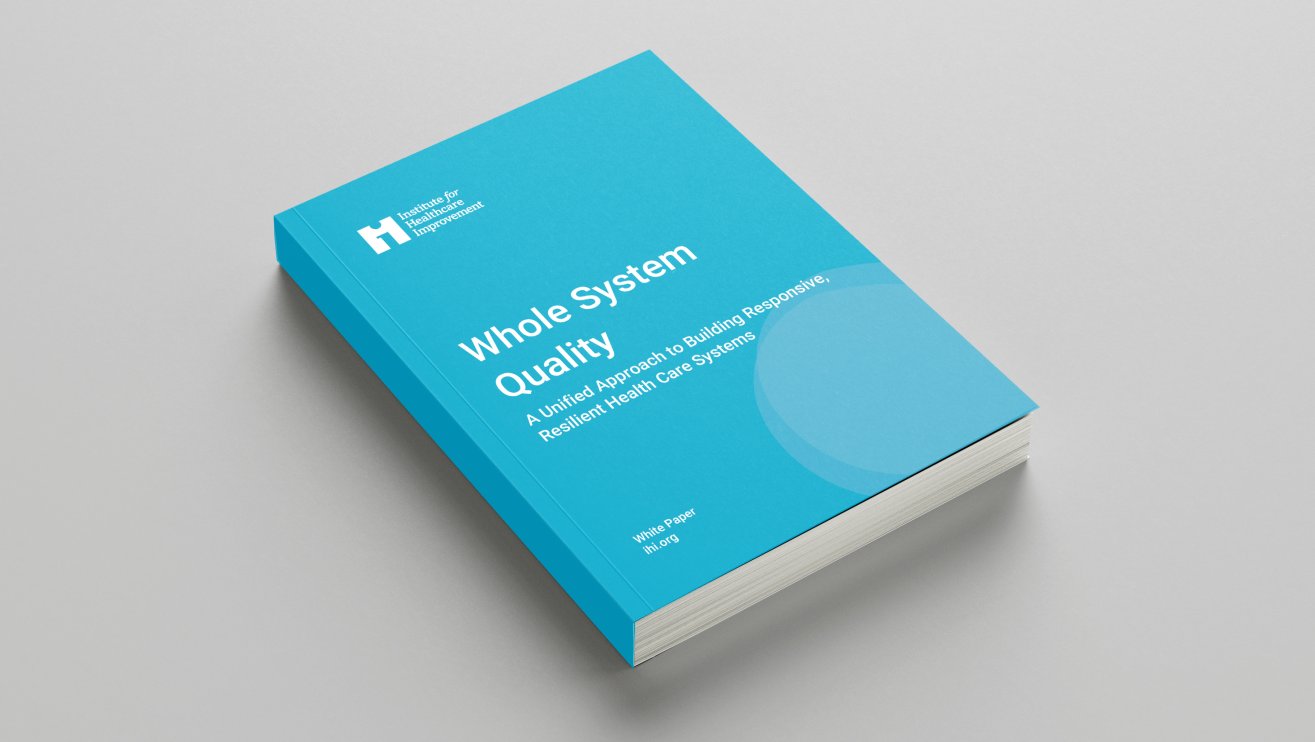Model for Improvement
IHI uses the Model for Improvement as the framework to guide and accelerate improvement work.
The Model for Improvement,* developed by Associates in Process Improvement, is a simple yet powerful framework for accelerating improvement.
The model is compatible with any change models that organizations may already be using and can help to accelerate improvement.
The Model for Improvement has two parts:
- Three fundamental questions, which can be addressed in any order.
- The Plan-Do-Study-Act (PDSA) cycle** to test and adapt changes to ensure they result in the desired improvement.
The three fundamental questions in the Model for improvement can be addressed in any order, although teams typically start with the first question — What are we trying to accomplish? — to guide them in setting aims.
Answering the model’s three questions is an iterative process — the team moves back and forth between them as changes in thinking in one question or learning from PDSA cycles results in changes in thinking in another.
The Model for Improvement has been used successfully in many industries, including thousands of health care organizations in numerous countries to improve countless different processes and outcomes. The model can also be used to ensure that improvements result in closing equity gaps rather than maintaining or widening them by applying an equity lens at every step of the process.
Learn More about the Model for Improvement
An Illustrated Look at Quality Improvement in Health Care
Science of Improvement on a Whiteboard
These popular videos feature IHI's Bob Lloyd drawing on a whiteboard to explain fundamental improvement methods and tools: Model for Improvement, PDSA cycles, run charts, control charts, flowcharts, driver diagrams, and more!
*Source:
Langley GL, Moen R, Nolan KM, Nolan TW, Norman CL, Provost LP. The Improvement Guide: A Practical Approach to Enhancing Organizational Performance (2nd edition). San Francisco: Jossey-Bass Publishers; 2009.
**For permission requests to use the Model for Improvement figure and/or related content, please contact the book publisher, Jossey-Bass (Wiley).
Learn, Connect, and Grow with IHI
IHI empowers your career growth and learning with a dynamic blend of in-person and virtual educational opportunities, designed with your needs in mind. Our programs are meticulously designed to foster collaborative learning and hands-on experiences, ensuring that you gain practical skills and insights.
Learn More


